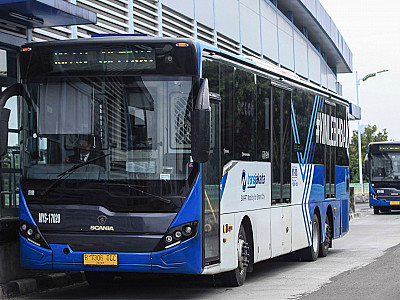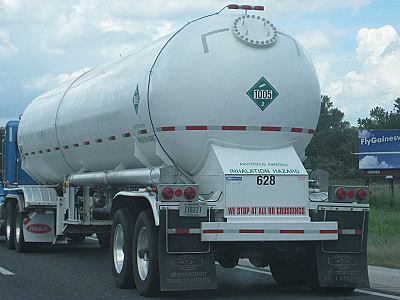Understanding the Opportunities of Insurance in Indonesia
An overview of the current trends within Indonesia's insurance industry.



Indonesia’s public transportation industry has seen massive improvements over the past decade, but is the industry actually making any profit? How has it been keeping up with its all-time competitor, motorization and the private transportation industry?
Mr. TW, one of Askpert’s advisors and part of our Indonesia expert network, shared not only the numerical updates of the public transport industry, but also shed light on recent trends of this bustling industry.
For big metropolitan cities in Indonesia, such as Bandung, Medan, and Jakarta, it is approximately 25% for public transport. This includes KAI or public railways, "angkot" or urban transport, and also buses. Most Indonesian people still prefer using and buying their own private vehicles since 2010, because of the simple purchase scheme and affordable price. Motorcycle, in particular, is a crowd favorite due to its low advance payment and convenience when navigating around the narrow streets of Jakarta.
In terms of the data itself, there is not a lot of accessible public research. Which is why it is much better to conduct a traffic counting directly on the field. This is especially useful to figure out the market share of inter-cities buses. Meanwhile, companies can also request access for TATRALOK or TATRAWIL (local transportation arrangements) to the Department of Transportation of each city or province.
Currently, Jakarta’s Bus Rapid Transit or also known as TransJakarta is setting a good example for other metropolitans. With an even better integrated ticketing system and constant frequency of buses, TransJakarta is starting to reap even more passengers. The important aspect of a good BRT is not necessarily seen from the number of routes it may have. Instead, city bus companies should focus more on areas with high density of possible passengers. Which will translate to more ticket fees, achieving the target set by local government, and more revenue.
Comparing Indonesia with foreign developed countries can be a bit tricky, because Indonesia currently is still at a stage of motorization. The citizens still prefer to buy their own private vehicles because of several factors. Two of which being 0% down payment when buying cars and cheap motorbike prices accompanied by its cheap fuel prices.
However, Mr. TW shared that the Indonesian government has started to push more policies and effort in improving the country’s public transportation. Of course, Indonesia is still quite behind when compared to these foreign countries, which have been accredited with a Gold Standard by the Institute for Transportation and Development Policy (ITDP):
The biggest challenge right now is the increasing popularity of ride hailing. Since traffic in Jakarta can be quite unpredictable and highly congested, most people prefer the convenience that is offered by ride hailing apps in Indonesia. Another plus is the affordable price tag of the fares. Of course, the fare will increase if there is rain or during rush hours, but ride hailing apps are still the go-to alternative for many Indonesians.
Mr. TW reassured that the potential in the industry is still very much there. He recommends establishing a partnership contract with the government by proposing a city bus Minimum Service Standards (SPM). Once approved, the city bus company will still earn income from the public service obligation sent by the government even though the city bus route or active hours have little amount of passengers. But when it comes to intercity buses, companies have to highlight their premium service in order to stay competitive with other bus companies. This can be ensured by maintaining a good cleanliness level, functioning air conditioning, comfortable seats, and reasonable price.
There are two types of passengers, the captive and choice passengers. They are differentiated based on their motives. The captive passengers are basically forced to ride city buses and other public transport. Why? Because they do not own any private vehicle, or they can’t spare any money left for their vehicle fuel and maintenance budget. Meanwhile, the choice passengers are the exact opposite. Riding the local public transport is just another option for them, and they will choose to do so when they feel like it.
The main priorities for each type of passenger differ. For captive riders, companies must focus on travel time and ticketing fee. TransJakarta in this case, has already set a good example with its dedicated lane. Ensuring the buses arrive and leave according to schedule. But for choice passengers, they may focus more on comfort, security, and travel time. These three will be the main aspects the passengers compare between the public transport and their own private vehicles.
When it comes to intercity buses, Mr. TW shared that the factors are more or less similar to those of city buses, but companies can further emphasize on their brand image and bus security, especially for night intercity buses. This is because drivers of night buses in Indonesia are known to be a bit more rowdy.
Mr. TW highly recommends private companies to work together with local governments in operating city buses to further add the incentives of continuously improving their services to better suit the preferences of the passengers.
Contact us to explore more about the current trends of the industry and be connected with our curated advisors.
Subscribe to our newsletter, and stay updated on the latest insights to various industries.
Mr. TW has over 6 years of experience working as a transport modeler & planner. He specializes in creating designs and models of transportation routes, ensuring efficiency in terms of minimizing the expenses to achieve greater output. As a senior employee, he was in charge of the highway construction in Danau Toba, collaborated with the Ministry of Public Works to create an outer highway route in Palu, and created a transportation master plan in Balikpapan and Madura.
We will give you updates of our latest news
An overview of the current trends within Indonesia's insurance industry.

One of Askpert's advisors had the opportunity to share his insights about the expedition industry.

Ammonia is one of the new green energy technologies to curb emissions. Mr. DF, a specialist in the ammonia manufacturing sector, provided us with insights into the expansion of the ammonia industry in Indonesia.

Our advisor shares insights on how ecommerce enablers have been helping brands in Indonesia.
